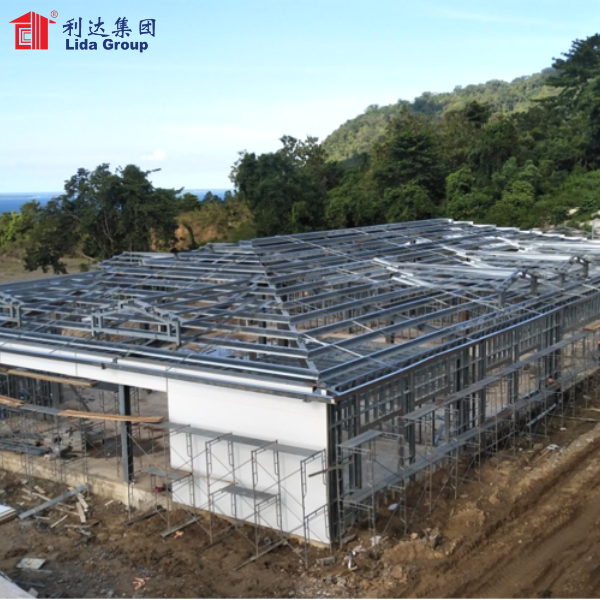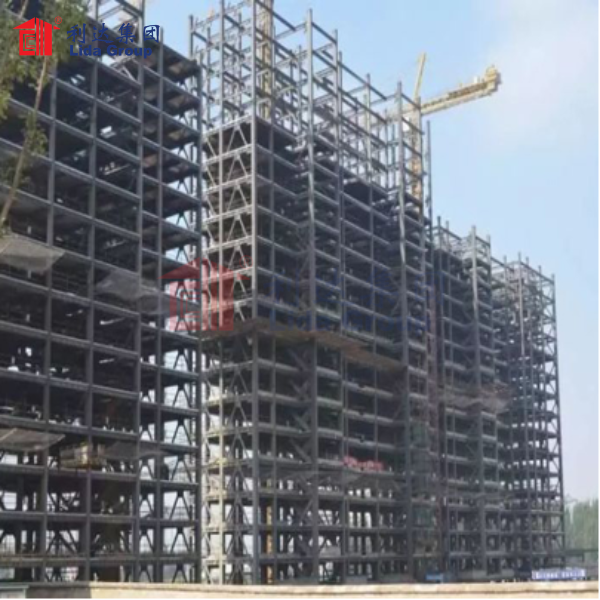Introduction
In today’s world, sustainability and efficiency have become critical considerations in the design and construction of buildings. Lida Group, a leading provider of steel structure warehouses, understands the importance of incorporating sustainable and efficient practices into their projects. In this article, we will explore how Lida Group integrates sustainability and efficiency into their steel structure warehouses, highlighting the benefits of these approaches for businesses and the environment.
- Sustainable Materials and Construction Practices
Lida Group is committed to using sustainable materials and construction practices in the development of their steel structure warehouses. They prioritize the use of environmentally friendly materials, such as recycled steel and low-emission concrete, which have a reduced carbon footprint compared to traditional construction materials.
Additionally, Lida Group follows sustainable construction practices that focus on minimizing waste and optimizing resource usage. Through careful planning and efficient construction techniques, they aim to reduce material waste and energy consumption during the building process. This approach not only lowers the environmental impact of the warehouse construction but also contributes to cost savings.
- Energy Efficiency in Building Operation
Energy efficiency is a key aspect of sustainability in Lida Group’s steel structure warehouses. These buildings are designed to minimize energy consumption and maximize operational efficiency. Several features and strategies are employed to achieve this goal.
Firstly, Lida Group integrates insulation materials into the walls, roof, and floor of the warehouse to reduce heat transfer and improve thermal performance. This helps maintain stable indoor temperatures, reducing the need for excessive heating or cooling and resulting in energy savings.
Secondly, innovative design elements, such as strategic placement of windows and skylights, allow for ample natural lighting during the day, reducing the reliance on artificial lighting. LED lighting fixtures are used throughout the warehouse to further enhance energy efficiency.
Moreover, Lida Group incorporates advanced HVAC systems that are designed for optimum energy performance. These systems utilize energy-efficient technologies and controls to regulate indoor climate conditions while minimizing energy consumption.
- Water Conservation Measures
Water conservation is another important aspect of sustainability in Lida Group’s steel structure warehouses. They implement various measures to reduce water usage and promote responsible water management.
Rainwater harvesting systems are often installed to collect and store rainwater for non-potable uses, such as irrigation or cleaning. This reduces the demand for freshwater resources and helps conserve water.
Additionally, Lida Group incorporates water-efficient fixtures and systems within the warehouse, such as low-flow faucets and toilets. By reducing water consumption in daily operations, businesses can contribute to water conservation efforts and potentially lower water bills.
- Integration of Renewable Energy Sources
Lida Group recognizes the significance of renewable energy and encourages the integration of renewable energy sources into their steel structure warehouses. They collaborate with clients to explore options for solar panels, wind turbines, or other renewable energy systems that can be installed on the building’s roof or surrounding areas.
By generating clean and sustainable energy on-site, businesses can reduce their reliance on traditional energy sources and lower their carbon footprint. This not only contributes to environmental conservation but also provides long-term cost savings through reduced energy expenses.
- Waste Management and Recycling
Proper waste management and recycling practices are integral to Lida Group’s sustainability efforts. They prioritize responsible waste disposal during the construction phase and encourage the implementation of recycling programs during the warehouse’s operational phase.
Construction waste, such as packaging materials and leftover materials, is segregated and recycled whenever possible. Lida Group promotes the use of recycled materials in their warehouses and encourages clients to adopt recycling practices for ongoing waste management.
By minimizing waste sent to landfills and promoting recycling, Lida Group aims to reduce the environmental impact associated with the construction and operation of steel structure warehouses.
Conclusion
Lida Group’s commitment to sustainability and efficiency in their steel structure warehouses sets them apart in the industry. By incorporating sustainable materials, energy-efficient design features, water conservation measures, renewable energy integration, and responsible waste management, they create buildings that are environmentally friendly and cost-effective.
The integration of sustainability and efficiency in Lida Group’s steel structure warehouses benefits businesses by reducing operational costs, improving energy performance, and enhancing environmental stewardship. These warehouses provide a sustainable and efficient solution for businesses across various industries, helping them achieve their sustainability goals while creating a productive and environmentally responsible workspace.
As sustainability continues to gain importance in the construction industry, Lida Group remains at the forefront, delivering steel structure warehouses that exemplify sustainable practices and contribute to a greener future.
Post time: May-09-2024


